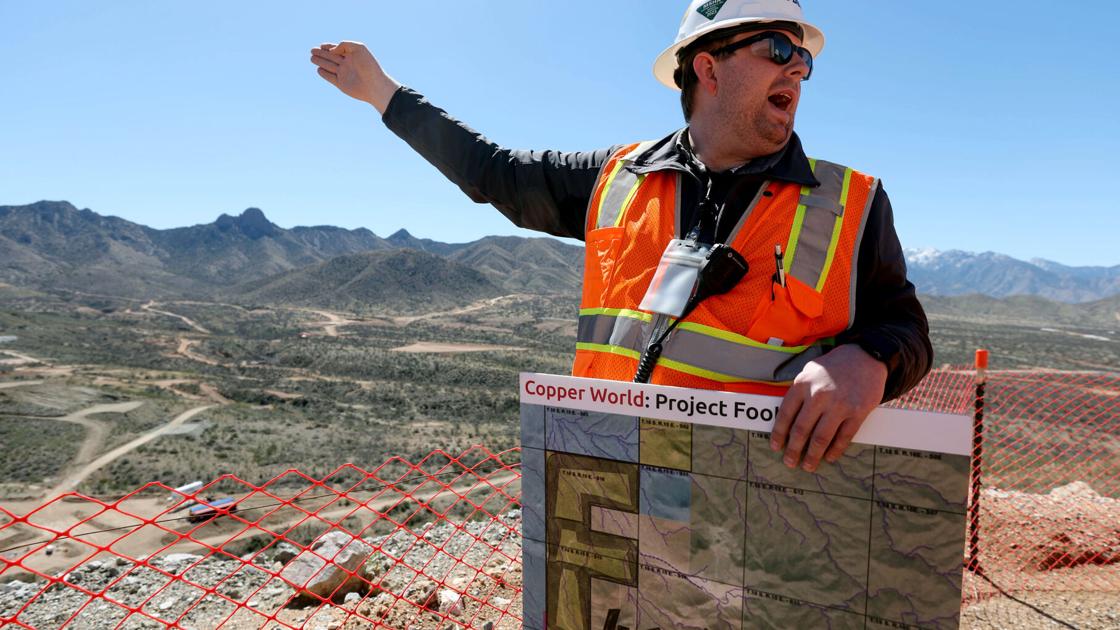The Arizona Department of Environmental Quality (ADEQ) has granted a crucial permit for the Copper World Mine, located in the Santa Rita Mountains. This approval brings the project one step closer to construction and eventual operation, but it has also sparked outrage among mine opponents.
Hudbay Minerals Inc., the company behind the project, has received the Aquifer Protection Permit, which aims to prevent pollution of the underlying groundwater. This approval follows the granting of a reclamation plan by the State Mine Inspector's Office. Only an air quality permit from ADEQ now stands between Hudbay and the commencement of construction.
Hudbay, buoyed by the permit approval, expressed satisfaction with the level of local support they received at public meetings. The company anticipates providing significant economic and social benefits to the Arizona community. They have also confirmed an increase in planned capital spending for the project in 2024, from £16 million to £36 million.
The permit approval has ignited controversy, with vocal opponents decrying the project's monitoring well network, its self-monitoring capabilities, and the lack of state groundwater quality standards for uranium. These concerns led ADEQ to make five changes to the permit, including the addition of two monitoring wells at the mine site to enhance pollution detection.
The permit covers 16 facilities at the mine site, encompassing five of the six planned open pits, waste rock disposal areas, and two out of three proposed tailings disposal areas. The sixth pit, located on the Santa Ritas' east slope, will not be covered by the permit due to an agreement between state officials and Hudbay that it will lose more water to evaporation than it will gain from rainfall and groundwater.
Seven ponds for stormwater capture and mineral processing solutions storage are also included in the permit. Although a heap leaching facility was initially planned, Hudbay has since opted for a different copper extraction process, the Albion Process.
ADEQ has assured that the permit's requirements will prevent the mine from contributing to violations of state groundwater quality standards. The mine will also adhere to state mandates to utilise Best Available Demonstrated Control Technology (BADCT) for pollution reduction.
While ADEQ estimates a 15-year mine life, Hudbay projects a 20-year lifespan for the initial phase, with the potential for mining the entire site, including the former Rosemont Mine site, for up to 44 years. The mine will operate in phases, extracting approximately 55,000 tonnes of sulfide ore and 18,000 to 41,000 tonnes of oxide ore daily.
Hudbay anticipates contributing over £680 million in US taxes over the initial 20 years, including approximately £136 million to Arizona. They also expect Copper World to create over 400 direct jobs and up to 3,000 indirect jobs in the state, offering competitive wages and benefits.
The company has received support from several local unions, including the International Brotherhood of Boilermakers, the Laborers International Union of North America, and the United Brotherhood of Carpenters and Joiners of America.
Following the Aquifer Protection Permit approval, Hudbay is expected to commence feasibility studies for Copper World. The permit's approval comes after numerous criticisms levelled at an earlier draft permit and two public sessions where mine opponents expressed concerns about inadequate groundwater protection measures.
Save the Scenic Santa Ritas, a group opposing the mine, has hired external experts to scrutinise the permit and has submitted 80 pages of written comments highlighting its inadequacies. The group is planning to review the permit documents before issuing a statement.
Despite changes to the mine plan since the permit proposal was submitted in 2022, including a new tailings storage facility and reconfiguration of a tailings disposal site, ADEQ has not required Hudbay to amend the permit to account for its planned expansion of a waste rock storage area or the replacement of the heap leaching facility with the Albion Process.
ADEQ maintains that permit revisions are common for large facilities and can be amended later before construction commences.
Article
Business

Copper World Mine: Key Permit Approved, Opponents Fume

